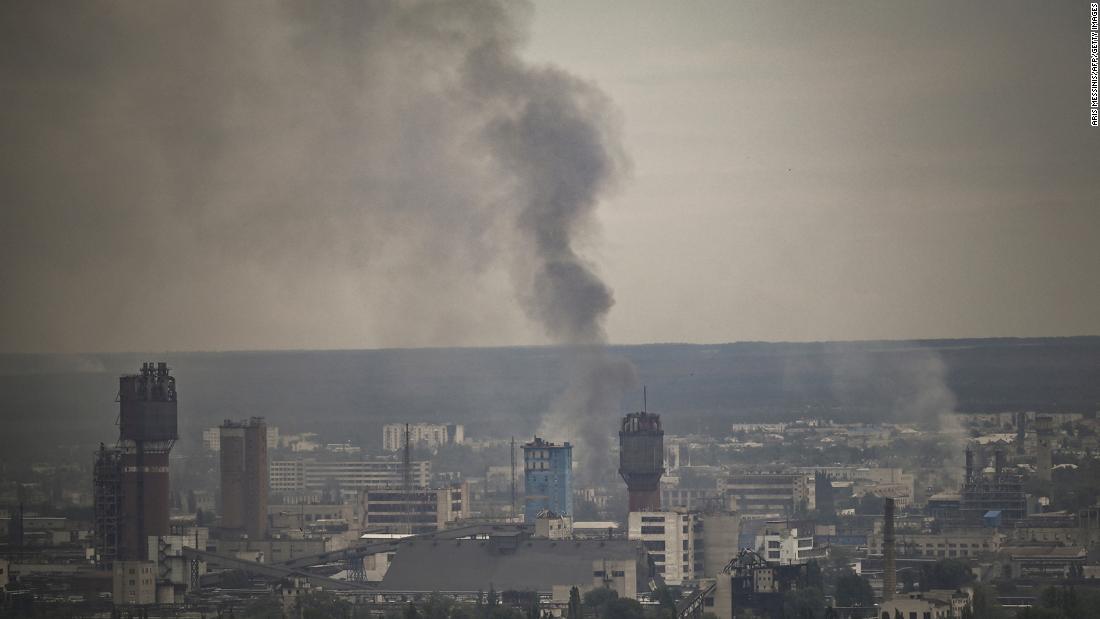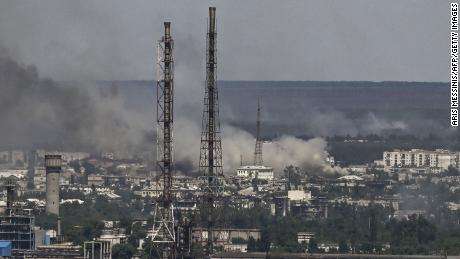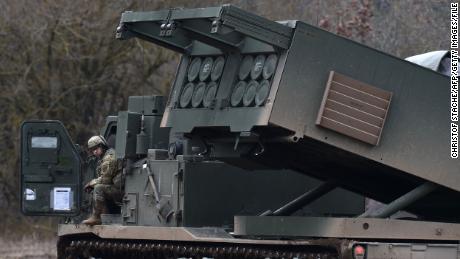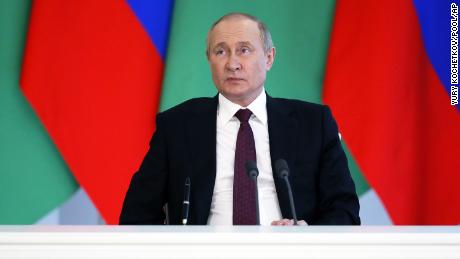
This pivotal moment could also force a tough decision for Western governments, which have up until now offered support to Ukraine at a steadily increasing cost to their own economies and national stockpiles of weapons.
“I think that you’re about to get to the point where one side or the other will be successful,” said a senior NATO official. “Either the Russians will reach Slovyansk and Kramatorsk or the Ukrainians will stop them here. And if the Ukrainians are able to hold the line here, in the face of this number forces, that will matter.”
Three potential outcomes
Western officials are closely watching three possible scenarios that they believe could unfold:
Then there is what officials consider the least likely possibility: Russia could redefine its war aims, announce that it has achieved victory and attempt to engineer a close to the fighting. For now, that scenario appears to be little more than wishful thinking, sources say.
Western military aid, he said, “has to come quicker” if Ukraine’s allies want to stymie Russia’s territorial ambitions.
Western officials broadly believe that Russia is in a more favorable position in the east, based solely on mass. Still, “Russian progress is not a foregone conclusion,” said one senior Biden administration official.
As the front lines of the conflict have settled into a war of attrition built around back-and-forth artillery fire, both sides have suffered tremendous casualties and now face potential manpower shortfalls. Russia has also suffered losses of as much as a third of its ground force, and US intelligence officials have said publicly that Russia will struggle to make any serious gains without a full mobilization, a politically dangerous move that Putin has so far been unwilling to make.
For now, the fighting is centered on two sister cities on opposite sides of the Seversky Donets River, Sievierodonetsk and Lysychansk. Ukrainian fighters are almost completely encircled at Sievierodonetsk.
Even though Western analysts believe Ukraine stands a better chance of defending Lysychansk, which sits on high ground, there are already troubling signs that Russian is attempting to cut off the city’s supply lines by advancing from the southeast.
“In many ways, the fate of our Donbas is being decided” around these two cities, Zelensky said last week.
A preference for Soviet systems
US officials insist that Western arms are still flowing to the front lines of the fight. But local reports of weapons shortages — and frustrated pleas from Ukrainian officials on the front lines — have raised questions about how effectively supply lines are running. Ukraine has begged not only for heavy artillery but also for even more basic supplies, like ammunition.
Part of the problem, sources say, is that even as Ukraine is running out of old Soviet munitions that fit existing systems, there have also been obstacles to transitioning its fighters to Western, NATO-compliant systems. For one thing, training soldiers on these systems takes time — and takes needed fighters away from the battlefield.
In some cases, according to one source familiar with US intelligence, Ukraine is simply opting not to use the unfamiliar Western systems. For example, despite receiving hundreds of Switchblade drones, some units prefer to use commercial drones rigged with explosives that are more user-friendly.
Meanwhile, there are a limited number of Soviet-era munitions still existing elsewhere in the world that can be sent to Ukraine. The US is urging nations with older stockpiles to figure out what they have available to give Ukraine, but the punishing artillery battle is “wiping Soviet stuff off the face of the earth” for Ukraine and the allies supplying it, according to a US official.
Although the US has a clear picture of Russian battlefield losses, it has struggled from the beginning to assess Ukraine’s fighting strength. Officials have acknowledged that the US doesn’t have a clear picture of where Western arms go or how effectively they are used once they cross the border into Ukraine — making intelligence predictions about the fighting difficult and policy decisions about how and when to resupply Ukraine equally tricky.
The senior Biden administration official told CNN that the US is trying to “better understand their [the Ukrainians’] consumption rate and operational pace,” when asked specifically if Ukraine is running low on ammunition and weapons. “It’s hard to know,” this person said. It’s clear that Ukraine is heavily using the artillery the US and other Western nations have provided, because much of it moves in and out of the country for repairs.
That blind spot is in part because Ukraine doesn’t tell the West everything, Western officials say. And because the fighting is concentrated in such a small area relatively close to Russia, Western intelligence services don’t have the same visibility that they do elsewhere.
“As you get down to the tactical level, especially in the location where the majority of the fighting is, it’s further away from us, closer to Russia, and the forces are more densely packed in very, very close to each other,” the senior NATO official said. “So it’s difficult to get a good granular picture of the status of fighting occasionally in the east.”
It’s also difficult to predict how Ukraine’s military will perform in this pivotal moment because as casualties have mounted, hastily trained civilian volunteers are being sent into the fight, the NATO official added. Their performance under fire is an unknown quantity.
“It’s one thing to have people available, but the question is, are they ready for the fight? I think you’re going to see that as a factor,” the official said.
Predicting Putin’s next move
Meanwhile, US and other Western officials see no sign that Putin’s commitment to prosecuting the costly war has diminished.
“In terms of the strategic aims that we judge Putin has vis-a-vis Ukraine, I don’t see any signs that those have changed,” the NATO official said. “Putin still believes that eventually he will be successful and will either physically control or will gain a form of political control over Ukraine in either significant part or ideally in whole.”
But even if Putin’s commitment remains ironclad, there is a growing awareness that the West’s might not be.
As the fighting has dragged on, the cost to Western governments has continued to rise. Some Western governments — including the United States — have become concerned that the flow of donated weapons to Ukraine has depleted national stockpiles critical to their own defense.
“It’s a valid concern” for the United States, the senior administration official acknowledged.
Then, of course, there is the sting of high energy prices and high inflation. As those costs begin to impact ordinary citizens, in the US and in Europe, and as media attention begins to drift from the day-to-day grind of the fighting, some officials fear Western support for Ukraine may wane.
The spokesperson for the Ukrainian military’s international legion on Monday derided a “sense of complacency” among Ukraine’s military patrons, saying the country needs far more support if it is to defeat Russia’s invasion.
“There’s a certain sense of complacency that seems to have fallen over our Western partners that the arms deliveries that Ukraine has been already provided with are somehow enough to win the war,” said Damien Magrou, spokesperson for the International Legion for the Defense of Ukraine, during a news conference.
“They are not! They do not come near anything that would be close to enabling us to defeat the Russians on the battlefield.”


